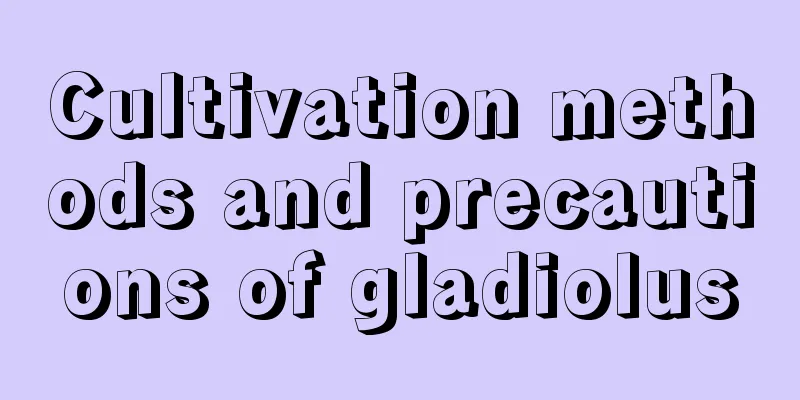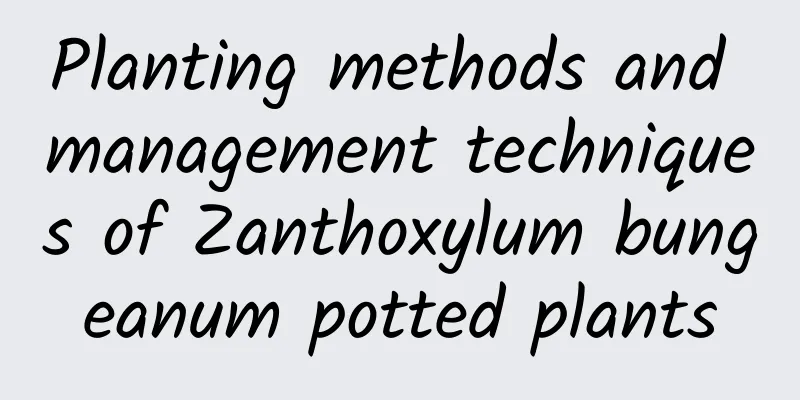Elderberry cultivation methods and precautions

How to grow elderberryPot soil selectionWhen growing elderberry in a pot, you need to choose a flower pot with good air permeability and drainage, and it is best if the flower pot is larger. The requirements for soil are not high, but it is better to have loose and fertile soil. Place broken tiles at the bottom of the pot to facilitate drainage, then add soil. Light and temperatureElderberry likes sunlight, but can also tolerate shade. It needs to be guaranteed to have sufficient light, otherwise the plant will grow too tall and affect flowering. It is not very demanding on the climate and is cold-resistant, able to withstand temperatures as low as -5°C. However, in the north it is best to keep it indoors for insulation. Watering and fertilizingElderberry has a high demand for water. During its peak growth period, the soil in the pot needs to be kept moist and watered frequently. However, elderberry is afraid of waterlogging, so it is necessary to avoid water accumulation in the pot, especially in the rainy season, and attention should be paid to drainage. Elderberry needs to be fertilized in moderation. During the peak growth period, in order to ensure that the soil has sufficient nutrients, fertilizer can be applied every 7-10 days. Nitrogen fertilizer is the main fertilizer, and pay attention to applying top dressing after flowering. Elderberry cultivation precautionsReproductionElderberry is generally propagated by cuttings and division. Cuttings are done in spring, and division can be done in spring or autumn, but spring is preferred. pruneThe pruning of elderberry mainly involves root pruning and branch pruning. Because the root system of elderberry is well-developed and the branches grow very rapidly, the well-developed root system needs to be pruned, and excessive branches also need to be pruned frequently during daily maintenance. Pests and diseasesThe common diseases of elderberry are leaf spot, powdery mildew and canker, which can be treated by spraying 65% mancozeb wettable powder. The insect pests are mainly fall armyworms, scale insects, aphids and penelopetrix, which are quite harmful and need to be killed by spraying with insecticides or homemade insecticides. |
<<: A complete monthly calendar for the care of indoor foliage plants
>>: Cultivation methods and precautions of red flower
Recommend
Can peonies be transplanted in spring?
1. Is it possible to transplant? Spring is not su...
The cost and profit of growing chives
Chinese chives are a common vegetable. They have ...
What to do if you water aloe vera too much
what to do When growing aloe vera, you must take ...
Can the cage of Nepenthes be filled with water? How to grow the cage?
1. Whether water can be irrigated When caring for...
Propagation of Pothos sinensis by leaf cuttings
1. Time Selection Generally, stem cuttings are us...
Disease and Pest Control of Rhododendron velutipes
one. Leaf swell Leaf swelling is one of the commo...
Bowl lotus planting methods and precautions
How to plant lotus 1. Sowing time: Bowl lotus gro...
How to grow water lilies in a vase and why do they close at night?
1. Why close Water lilies open during the day and...
What are the common purple flowers?
1. Iris The common color of irises is blue-purple...
Will Polygonatum freeze to death in winter?
1. Will I freeze to death? Polygonatum has a rela...
How to grow hydroponic strawberries
1. Preparation Before hydroponically growing stra...
How to fertilize the green radish to make it grow more vigorously?
Like Chlorophytum comosum, Chlorophytum comosum i...
Can I add vinegar to water azalea? The azalea wilts after watering.
1. Is it okay to add vinegar? Rhododendrons prefe...
How to cultivate Fritillaria
1. Maintenance methods 1. Temperature: Fritillari...
Common diseases and pests of Adiantum and their control methods
Maidenhair Fern Pests – Scale Insects symptom Sca...









